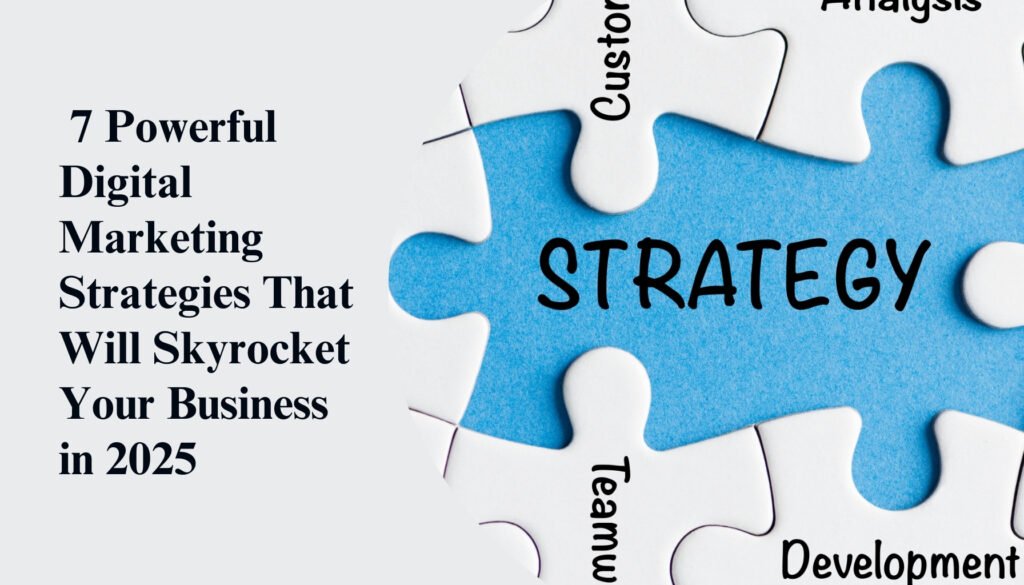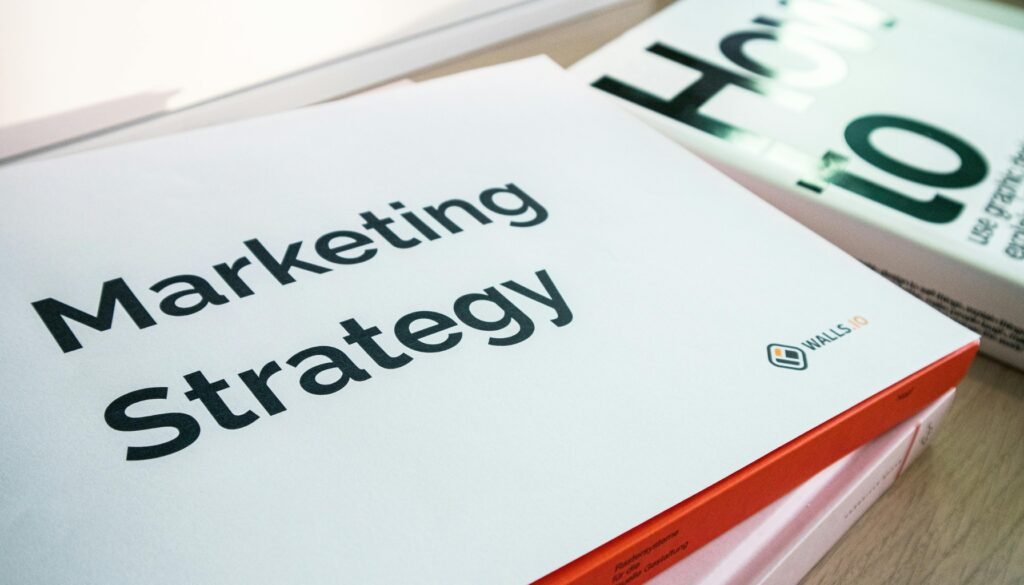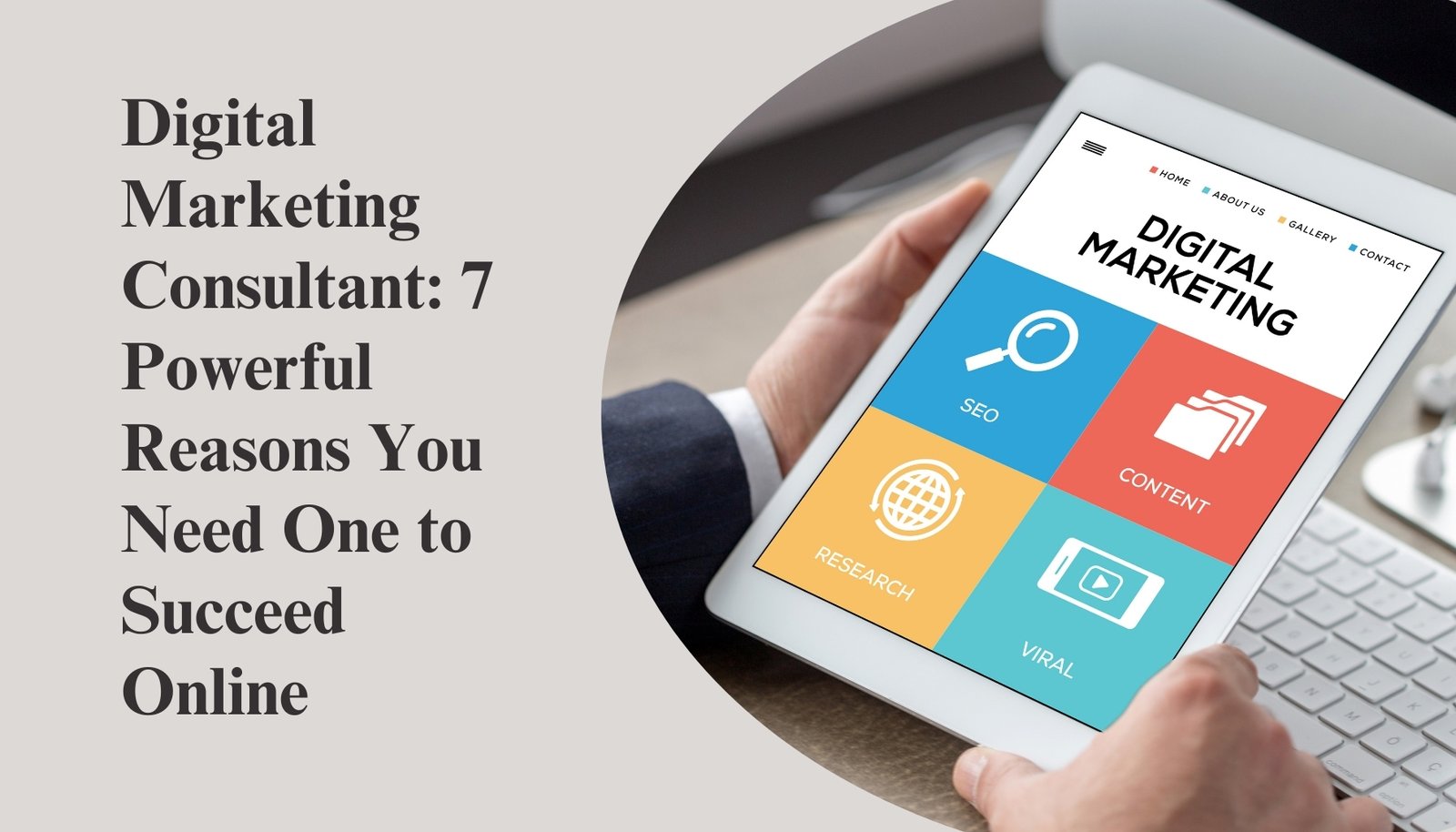In today’s fast-paced digital world, businesses need to stay ahead of the curve to maintain relevance, visibility, and growth. One of the most essential elements of a successful online presence is having a well-defined digital marketing strategy. This strategy serves as the roadmap for achieving business goals, building brand awareness, increasing engagement, and driving conversions through various online channels. These channels include search engines, social media platforms, email campaigns, and more.

A digital marketing strategy involves a comprehensive plan that outlines your goals, target audience, and the tactics you’ll employ to meet those goals. It provides clear direction on where to focus efforts, what content to produce, which platforms to utilize, and how to measure success.
Crafting a thoughtful and effective digital marketing strategy is critical in today’s digital ecosystem, where competition is fierce, and consumer behavior is constantly evolving. Without a cohesive strategy, businesses risk wasting resources on ineffective campaigns and missing opportunities for growth.
This article will walk you through the core elements of a digital marketing strategy, its importance, and how you can build a plan that drives real, measurable results for your business.
Why Is a Digital Marketing Strategy Important?
In the digital age, a digital marketing strategy is the foundation for all online marketing efforts. Here’s why it’s so crucial for businesses of all sizes:
- Provides Clear Direction and Focus
Without a strategy, businesses often find themselves pursuing various marketing efforts that don’t align with their objectives. A digital marketing strategy helps define your goals, clarify your messaging, and prioritize marketing efforts, ensuring you focus on the right tactics at the right time. - Helps Target the Right Audience
A well-defined digital marketing strategy is built around understanding your audience. It enables you to identify who your customers are, what they care about, and how they interact with online content. By targeting the right audience, businesses can maximize the effectiveness of their marketing campaigns. - Optimizes Marketing Budgets
With limited resources, it’s crucial to allocate marketing budgets efficiently. A digital marketing strategy helps businesses prioritize the most cost-effective channels and tactics, ensuring that marketing spend delivers the best ROI. By tracking performance metrics, businesses can adjust their strategy to optimize spending. - Improves Customer Engagement and Conversion
An effective strategy improves customer engagement by tailoring content and campaigns to your target audience’s needs. By leveraging the right digital marketing channels, businesses can build relationships with customers and increase conversion rates. - Staying Competitive
With the digital marketing landscape evolving rapidly, staying updated with the latest tools, trends, and techniques is essential. A digital marketing strategy keeps you ahead of the competition by identifying the best opportunities to leverage new technologies and tactics that resonate with your audience.

Key Components of a Digital Marketing Strategy
An effective digital marketing strategy incorporates several key components that work together to achieve business objectives. Let’s break down the most important ones:
1. Goal Setting
The first step in crafting your digital marketing strategy is setting clear, measurable goals. These could include increasing website traffic, improving brand awareness, growing social media followers, generating leads, or boosting online sales. It’s important to use SMART goals (Specific, Measurable, Achievable, Relevant, and Time-bound) to ensure your objectives are clear and actionable.
Common digital marketing goals include:
- Increase organic website traffic
- Boost social media engagement
- Generate more qualified leads
- Improve online sales or conversions
- Enhance customer loyalty and retention
2. Target Audience Research
Understanding your audience is critical to the success of your digital marketing strategy. Audience research involves gathering data about your customers, including their demographics (age, gender, location), interests, online behavior, and pain points. By understanding who your customers are and what they need, you can craft marketing messages that resonate with them and use the appropriate channels to reach them.
3. Content Marketing
Content is king in the world of digital marketing. Quality content is essential for building authority, engaging customers, and improving SEO. Whether it’s blog posts, videos, eBooks, or infographics, creating high-value content that educates and entertains is crucial for attracting and retaining an audience.
Content marketing also involves developing a content calendar and ensuring that content is consistently aligned with your audience’s interests and the overall marketing goals.
4. SEO (Search Engine Optimization)
SEO is the practice of optimizing your website and content to rank higher on search engine results pages (SERPs). A strong SEO strategy ensures that your business is discoverable by users searching for relevant keywords or topics.
There are two main components to SEO:
- On-page SEO: This involves optimizing individual pages on your website (e.g., keyword optimization, meta descriptions, and internal linking).
- Off-page SEO: This focuses on building high-quality backlinks strategies to your website from reputable external sources.
SEO is a long-term strategy that helps improve organic search rankings and drives consistent traffic to your website over time.
5. Social Media Marketing
Social media is one of the most powerful channels for reaching and engaging your audience. Platforms like Facebook, Instagram, Twitter, LinkedIn, and TikTok allow businesses to share content, engage with followers, and run targeted ads. A social media marketing strategy should include creating engaging content, interacting with followers, and running paid campaigns to increase brand visibility and drive traffic.
Social media also provides valuable insights into customer sentiment, allowing businesses to improve their marketing efforts based on real-time feedback.
6. Paid Advertising
Paid advertising includes strategies such as Pay-Per-Click (PPC) campaigns, social media ads, display ads, and influencer marketing. PPC advertising, such as Google Ads, allows businesses to bid on keywords and display ads to users who are actively searching for specific products or services.
Paid campaigns can deliver quick results, making them an effective complement to SEO efforts. However, to maximize ROI, businesses need to carefully manage their ad spend, targeting, and campaign performance.
7. Email Marketing
Email marketing remains one of the most effective ways to nurture leads and build customer relationships. By sending personalized, relevant emails, businesses can stay top of mind and encourage repeat purchases. Email marketing can include newsletters, promotional emails, or automated follow-up sequences based on user behavior (e.g., cart abandonment emails).
Building an email list and segmenting it based on customer preferences or past behaviors is key to delivering highly targeted content that drives conversions.
Digital Marketing Strategy: The 7-Step Process
Building a successful digital marketing strategy can feel overwhelming, but by breaking it down into clear steps, it becomes a manageable process. Here’s a simple 7-step process for creating your digital marketing strategy:
| Step | Action | Description |
|---|---|---|
| 1 | Set Clear Goals | Define what you want to achieve (e.g., sales, brand awareness). Make your goals SMART (Specific, Measurable, Achievable, Relevant, Time-bound). |
| 2 | Define Your Target Audience | Research your audience’s demographics, behavior, preferences, and pain points to create buyer personas. |
| 3 | Choose the Right Channels | Select the most effective channels (SEO, PPC, social media, email marketing) based on your audience and goals. |
| 4 | Create High-Quality Content | Develop content that speaks to your audience’s needs and provides value (blogs, videos, eBooks). |
| 5 | Optimize for SEO | Conduct keyword research, optimize content, and focus on link-building to improve organic search rankings. |
| 6 | Implement Paid Advertising | Use paid advertising to complement organic efforts and drive immediate traffic to your site. |
| 7 | Measure & Analyze Performance | Use analytics tools to track your strategy’s success and make data-driven adjustments for improvement. |
Frequently Asked Questions About Digital Marketing Strategy
1. What are the best digital marketing strategies for small businesses?
Small businesses should prioritize strategies like SEO, local search marketing, social media engagement, and email marketing. These channels offer great ROI with a modest budget and are ideal for building a loyal customer base.
2. How do I stay updated with digital marketing trends?
Staying informed about digital marketing trends involves regularly reading blogs, attending webinars, and following industry influencers on social media. Key sources include blogs like HubSpot, Neil Patel, and Moz, as well as online platforms like LinkedIn and Twitter.
3. How long does it take to see results from digital marketing?
Digital marketing efforts can take anywhere from 3 to 6 months to show significant results, especially when it comes to SEO. Paid campaigns, however, can drive faster results. Consistency and regular analysis are key to long-term success.
4. How do I measure the success of my digital marketing strategy?
Key performance indicators (KPIs) include website traffic, conversion rates, bounce rates, social media engagement, and ROI from paid ads. Use analytics tools like Google Analytics and social media insights to track and measure performance.
People Also Search For:
- Top digital marketing trends in 2025
- How to create a digital marketing plan for small business
- Digital marketing tools to increase website traffic
- Best practices for social media marketing
Conclusion: Implement Your Digital Marketing Strategy Today!
As we’ve explored, a digital marketing agency is essential for driving growth, increasing brand visibility, and maximizing ROI. Whether you’re just starting or refining your existing strategy, focusing on the right goals, target audience, and digital channels will set your business on the path to success.
Begin by identifying your goals, researching your audience, and choosing the right channels for your business. Ensure your content is valuable and optimized for SEO, then use paid ads and email marketing to amplify your efforts. Measure your results regularly, adjust your tactics, and stay up-to-date with digital marketing trends to keep your strategy effective.
With a thoughtful and strategic approach, your digital marketing efforts will lead to measurable success. Now is the perfect time to implement a digital marketing strategy that will take your business to new heights in 2025 and beyond.















